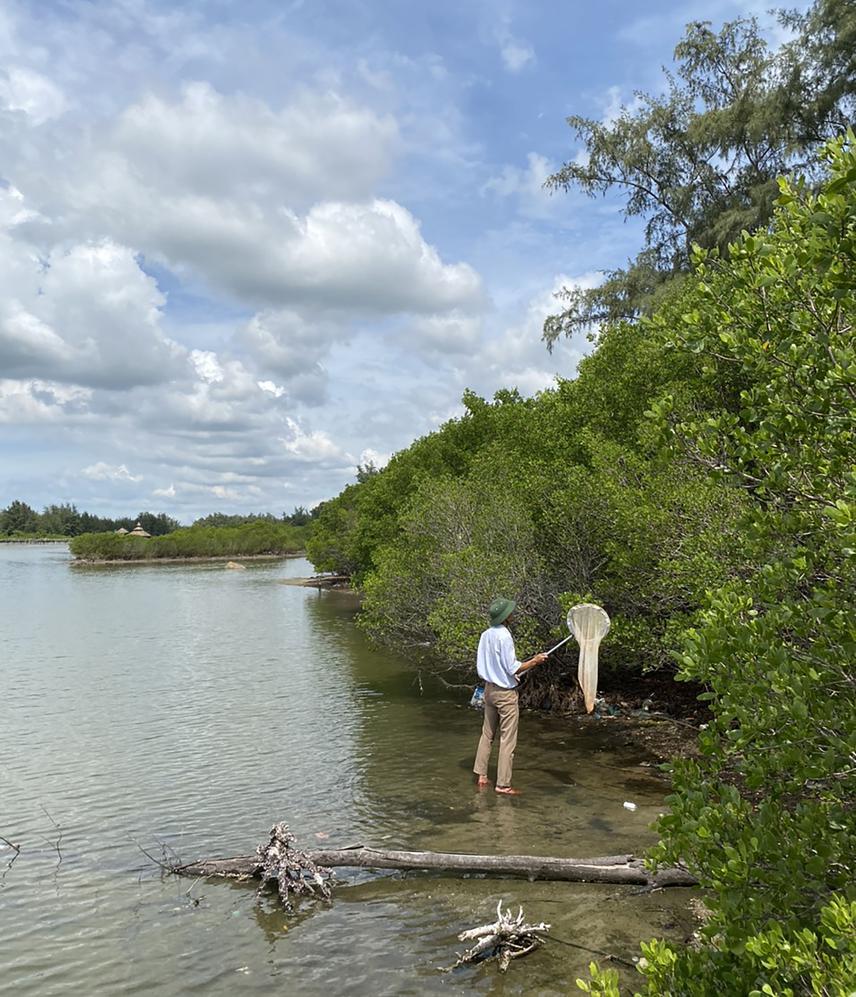Đình Đức Bùi
Odonata (dragonflies, damselflies) are among the most dominant insect species associated freshwater sources. The development of the larval and egg stages of Odonata occurs in freshwater environment (Clausnitzer et al. 2009), while the adults often require specific habitats and respond quickly to changes in the physical structures of habitats and landscapes (Brasil et al. 2018). Therefore, Odonata has been seen as a good group for evaluating water quality and physical structure of aquatic habitats, particularly habitat connectivity (Golfieri et al. 2016).

Streamside forests in Huu Lien Nature Reserve. © Đình Đức Bùi
In Vietnam, the Odonata fauna was investigated in several protected nature areas. For example, Phan et al. (2011) reported a list of 13 Caloptera damselflies in Xuan Son National Park (northern Vietnam). Phan and To (2017) provided a checklist of 44 Odonata species (21 Zygoptera and 23 Anisoptera) from Son Tra Nature Reserve (central Vietnam). Phan and Ngo (2019) recorded 49 damselfly species from Kon Ka Kinh National Park (southern Vietnam). However, most previous studies did not examine responses of Odonata communities to habitat changes. The Huu Lien Nature Reserve covers a total area of 10,640 ha and is dominated by limestone karsts.
Additionally, Huu Lien NR contains freshwater ecosystems with two main streams, namely Buc and An, and the four lakes: Giangca (125 ha), Deolong (60 ha), Landat (30 ha) and Lanty (19 ha), providing preferred habitats for numerous Odonata species. So far, the four endangered Odonata species, including Atrocalopteryx atrocyana, Atrocalopteryx coomani, Nihonogomphus schorri and Matticnemis doi were recorded in Huulien NR (Phan 2018, 2020; Manh 2011, Dow 2020). However, an adequate assessment of conservation status of these Odonata species is lacking. Also, the diversity pattern of Odonata across various habitats with varying degrees of environmental disturbance has not been described yet. Through investigating the adults of Odonata communities along various streams with varying degrees of environmental disturbance in Huu Lien NR, we aimed to
(1) Describe the diversity of adults of dragonflies and damselflies in Huu Lien NR.
(2) Establish a database on the distribution and population status of the four endangered Odonata species that were recorded in previous studies.
(3) Decipher links between the environmental factors (e.g., forest canopy cover, sun exposure, moisture, ambient temperature, etc.) and Odonata species, subsequently giving proposed measures to reduce potential threats to Odonata species
(4) Enhance capacity building and raise awareness among local stakeholders in conserving the Odonata.
Header: Trigomphus kompieri.